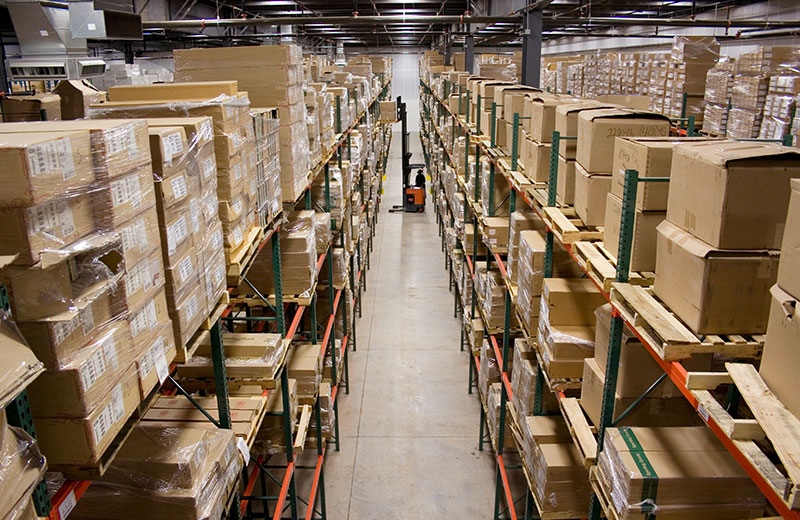July 31, 2020: The ongoing pandemic has severely impacted several sectors of the economy, including the real estate sector. At a time when the Indian real estate sector has been facing a slowdown, the warehousing segment has emerged as a promising investment opportunity for investors.
The segment, since 2017, has garnered the second-highest share in equity investment after office and has exceeded investments in the retail asset by over three times. Office segments witnessed the equity investment at 9.3 billion dollars, followed by warehousing at 6.5 billion dollars and retail at 1.9 billion dollars in the said period.
The momentum of investments has seen a minor setback this year due to the pandemic which has led many deals to be stuck in different stages of transactions and are likely to get completed at the onset of normality.
Due to a dearth in projects of substantial size, which can enable funds to make more meaningful investments on a larger scale, investors preferred to go for creating such assets that can eventually become worthy for REITs or secondary sales.
Thus, 77 percent of investments in the sector have gone in greenfield/new development projects while 12 percent into a mix of ready and new development. Only 11 percent of the inflows went into the acquisition of ready projects.
Since 2011, investors originating in countries like Singapore with 1,731 million dollars followed by UAE (1,600 mn dollars) and Germany (1,000 mn dollars) have made substantial investments in the India warehousing market.
Warehousing demand has seen strong growth in the last few years and has recorded a significant rise of 44 percent CAGR since 2017, mostly after the introduction of Goods and Services Tax (GST).
The warehousing leasing activity saw healthy demand in Mumbai (8% YoY), Pune (42% YoY) and Ahmedabad (5% YoY) in FY2020. The need for fully compliant Grade A properties that increase the efficiency of the supply chain continues to gain momentum. Pune and Chennai have the highest concentrations of Grade A stock, 71 percent, and 69 percent respectively, due to their primary demand base of auto and auto ancillary occupiers.
Due to an increase in demand for warehousing the cap rates have seen a significant decline from 13 percent to 15 percent in the year 2011 to 8.5 percent to 9.5 percent in the year 2019. This can be attributed to the supply of good warehousing, regulatory eco-system, and formalization of the segment.
Despite the economic slowdown in FY- 2020, warehousing market of Pune registered 42 percent growth year-on-year (YoY) over FY- 2019. This growth was driven by third-party logistics (3PL), e-commerce, and manufacturing segments.
Due to nationwide lockdown,delivering essential services to the masses became a necessity, which has resulted in a significant growth in the Tier 2 and Tier 3 warehousing markets. These markets are still at a nascent stage and are contributing around 13 percent to overall warehousing demand however recorded a tremendous growth rate of 20 percent in FY-2020.
Third-Party Logistics (3PL), E-commerce and manufacturing warehousing demand have been recording healthy growth in the last few years; each of their respective shares in demand has increased to 36 percent, 23 percent and 23 percent in the same period. Where e-commerce took the largest share of warehouse leasing in Guwahati, Jaipur, and Ludhiana.
The fastest-growing E-commerce market has undoubtedly increased the demand for warehousing in various cities. The e-commerce market, which has witnessed strong growth in the last few years, is estimated to be at 70 billion dollars in 2019 and is forecasted to reach over 160 billion dollars by 2022.
At present, the pan–India footprint of e-commerce warehousing is estimated to be around 50 mn sq ft, of which Amazon occupies more than half. Flipkart comes next with approximately 15 percent share and the total occupancy for these two players is estimated to be around 70 percent to 75 percent.
As the internet penetration in India continues to grow, and with the shift in buying behaviour due to COVID-19, e-commerce growth is likely to accelerate. This will further increase the share of e-commerce demand in the medium to long-term.
As we go further, there are certain new trends likely to emerge, which can drive warehousing growth:
Smaller cities to see more demand: Rising demand and e-commerce has created a need for faster delivery, even in markets beyond the major cities. Smaller cities which include markets like Ludhiana, Coimbatore, Vapi, Guwahati, Bhubaneshwar, Surat, Lucknow, Patna,Siliguri and Ambala- Rajpura belt are therefore witnessing higher warehousing demand especially from e-commerce players. To strengthen this trend, e-commerce and 3 PL players capitalize on this consumption-driven demand in smaller cities.
Third-party logistics (3PL) to lead the warehousing demand:Since the implementation of GST in 2017, specialized service for the storage and distribution of goods offered by the 3PL has gained prominence. Until a few years ago, in-house logistics operations were the mainstay for supply chain activities. The segment has witnessed the largest share in warehousing in recent years. We expect that the uncertainty created by the current crisis and producer ambitious of exploring newer markets will lead to greater dependence on the 3PL segment.
Cold storage warehousing to capture attention: During the lockdown, many new customers experimented with purchase on e-commerce channels which turned a better experience for the customers. Many of these customers are likely to turn loyal due to the convenience offered and become permanent customers even after the pandemic ends.
Going forward, the advent of the pandemic might have adversely impacted the growth rate of this sector; however, warehousing segment is likely to recover quickest post-Covid -19 given the increase in confidence for e-commerce, strong demand from sectors like 3PL, FMCG, pharmaceuticals, and also a lack of Grade A warehousing in India.
Source: moneycontrol






